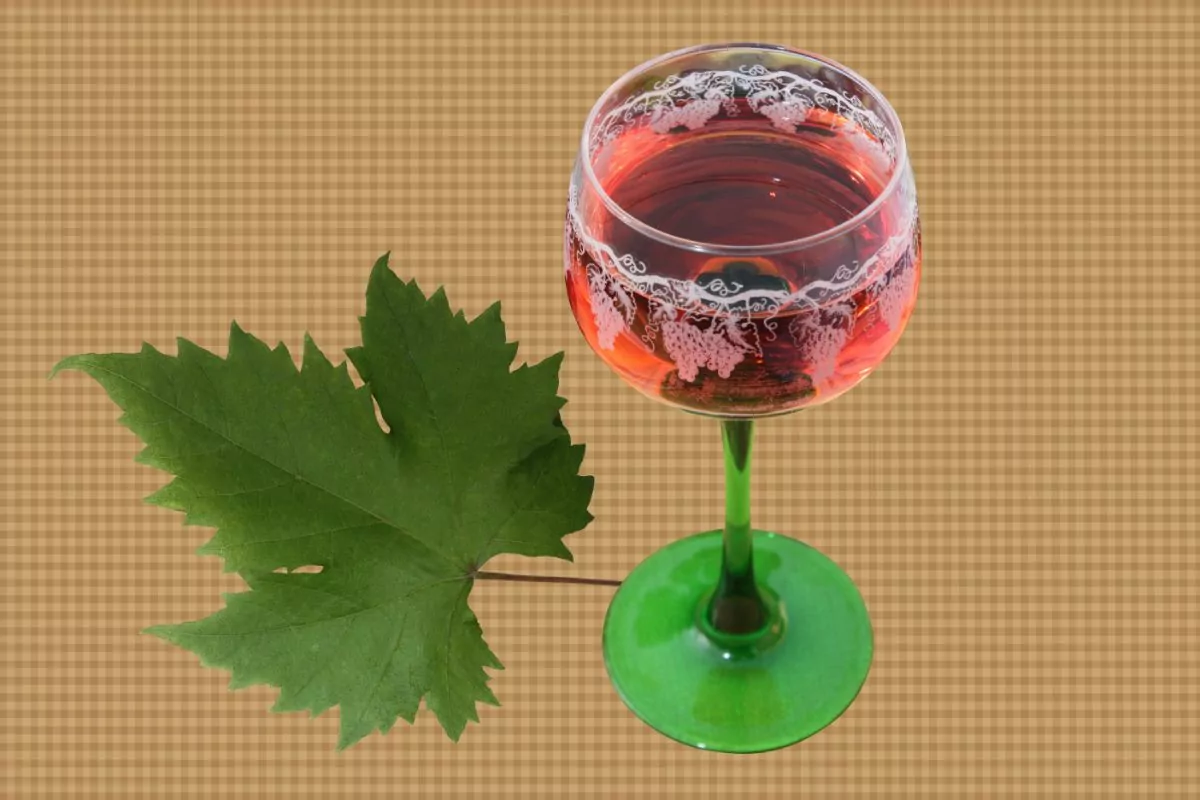Pinot Noir is a type of wine grape known for its complex flavors, delicate structure, and distinct characteristics of the region in which it is grown.
It is regarded as one of the most difficult grape varieties to cultivate and produce wine from, but the resulting wines are highly valued by wine lovers and collectors worldwide.

But what if you want to learn more about how this wonderful type of wine is made? If this has piqued your interest, you’ve come to the right place!
In this comprehensive guide to Pinot Noir, we will look at what Pinot Noir is, the best countries for Pinot Noir production, how to choose a good bottle of Pinot Noir, and some of the history of this wine.
We’ve also made sure to include a section that will give you some tips on what food pairs well with it, as well as an extensive FAQ section to help answer your questions.
What Is Pinot Noir?
Pinot Noir is a kind of wine grape of the red variety grown worldwide. It is distinguished by its thin skin, which makes it susceptible to disease, as well as its low yields, which make it a difficult grape to cultivate.
Despite these difficulties, Pinot Noir is highly sought after by winemakers because it can create wines that are delicate, complex, and full of flavor.
Pinot Noir is a very old grape variety that is thought to have originated in the Burgundy region of France.
It is now grown in many countries around the world, including the United States, New Zealand, Australia, and Chile.
The Taste Profile Of Pinot Noir
Let us now delve into the flavor profile of Pinot Noir. Pinot Noir is a delicate and nuanced wine with a wide range of flavors and aromas that vary depending on region, climate, and winemaking techniques.
It is known for its fruity flavor, with flavors of red and black fruits like cherry, strawberry, raspberry, and blackberry dominating.
These fruits can range from fresh and bright to ripe and jammy, depending on the ripeness of the grapes and the level of oak aging.
Some Pinot Noirs may also have hints of dried fruits, such as fig or raisin, which add complexity and depth.
Pinot Noir can also have spicy and herbal notes like clove, cinnamon, vanilla, licorice, and tobacco.
These flavors are frequently derived from the oak aging process as well as the natural aromatic compounds found in grapes.
They can enhance the wine’s depth and complexity while also complementing the fruit flavors.
Pinot Noir is frequently described as having an earthy or mushroomy flavor, with notes of forest floor, truffle, and damp leaves.
These aromas and flavors are associated with wines from cooler climates, where grapes have more time to develop complex aromas and flavors.
Pinot Noir has a medium to high level of acidity, which gives it a refreshing and lively character while also allowing it to age well.
Pinot Noir has lower tannins than other red wines, such as Cabernet Sauvignon or Syrah, making it a more approachable and easy-drinking wine.
However, some Pinot Noirs, particularly those from cooler regions or with extended skin contact, can still have a firm and structured tannin profile.
Pinot Noir is often described as having a lighter body and a silky texture, making it a versatile and food-friendly wine.
However, some Pinot Noirs, particularly those from warmer regions or aged for a longer period of time, can have a fuller body and a richer texture.
The winemaking techniques used, such as whole cluster fermentation or barrel aging, can also have an impact on the texture of Pinot Noir.

The Best Countries For Pinot Noir
Pinot Noir is grown in many countries around the world, but some areas are known for producing exceptional Pinot Noir wines.
In the sections that follow, we’ll look at some of the best Pinot Noir producing countries.
France
Burgundy, France, is regarded as the birthplace of Pinot Noir and is still one of the best Pinot Noir producing regions today.
Burgundy wines are frequently described as elegant, complex, and subtle, with flavors of red fruit, earth, and spice.
United States
Pinot Noir is grown extensively in California, Oregon, and Washington. These wines are frequently more fruit-forward than those from Burgundy, with flavors of cherries, berries, and spices.
New Zealand
The Pinot Noir wines from New Zealand are known for their bright fruit flavors, including strawberry, raspberry, and cherry, as well as their lively acidity and mineral notes.
Australia
Pinot Noir is grown in many parts of Australia, but the wines from the Mornington Peninsula and Tasmania stand out.
Red fruit, earth, and spice flavors can be found in these wines, which are frequently characterized as complex and elegant.
Chile
Chile’s Casablanca and Leyda regions are just two of the places where pinot noir is grown.
These regions are known for their fruit-forward wines that are inexpensive and have flavors of cherries, berries, and spices.
How To Select A Good Bottle Of Pinot Noir
It can be difficult to find a good bottle of Pinot Noir because it is a complex and nuanced wine.
In this section, we’re going to give you some tips to keep in mind when selecting a good bottle of Pinot Noir.
Consider The Region
Wines made from pinot noir can differ greatly depending on where they were grown.
Look for bottles from regions that are renowned for producing high-quality Pinot Noir wines after doing some research on them.
Look For Balance
Fruit flavors, acidity, tannins, and alcohol should all work together to create a balanced Pinot Noir. We would recommend avoiding wines that are too fruit-forward or too tannic.
Check The Vintage
Wines made from the pinot noir grape can differ significantly from one vintage to the next, so it’s important to read the year on the bottle.
Pinot Noir wines from cooler years tend to be more elegant, whereas those from warmer years tend to be fruitier.
Consider The Producer
Consider purchasing wines from reputable producers who have a track record of producing quality Pinot Noir wines. This is not a guarantee of quality, but it can be a good indicator.
Read Reviews
Read wine critic or other wine enthusiast reviews of a particular bottle of Pinot Noir if you’re not sure about it.
This can help you determine what to anticipate from the wine and whether it is worthwhile to purchase.
Taste Before You Buy
If at all possible, try the wine before buying it. This can help you determine the flavors of the wine and whether you like it.
Wine tastings are available in many wine stores and tasting rooms, and some restaurants also offer wine flights or by-the-glass options.
You can also choose to purchase a smaller bottle of the wine before committing to larger bottles.
While this isn’t always possible with some of the most expensive wines out there, you should know that cheaper wines quite often have small versions of their bottles for you to enjoy without any commitment.
Always inquire when you’re thinking of making a purchase!

The History Of Pinot Noir
With a history that spans thousands of years, pinot noir is one of the oldest grape varieties in existence.
It is thought that the grape first appeared in Burgundy, France, where it has been cultivated since at least the first century AD.
The planting of Pinot Noir in Germany, Italy, and Switzerland helped the grape’s spread throughout Europe over the centuries.
California, Oregon, and Washington were the three states in which Pinot Noir was planted during the 19th century.
Today, many nations around the world, including Australia, New Zealand, Chile, and South Africa, grow pinot noir.
Despite being widely used to make wine, Pinot Noir continues to be a challenging grape to grow and produce because of its low yields, susceptibility to disease, and delicate structure.
How Should I Serve Pinot Noir?
Serving Pinot Noir in the appropriate glass and at the appropriate temperature can enhance its flavors and aromas and make drinking it more pleasurable.
Following are some suggestions for serving pinot noir:
Temperature
The ideal serving temperature for pinot noir is between 55 and 65 degrees Fahrenheit (12 and 18 degrees Celsius) to bring out its fruity and spicy flavors and smooth out its tannins.
The wine can taste overly alcoholic and lose its complexity if it is served too warm. Its flavors and aromas may be muted if it is too cold.
If necessary, chill the bottle in the fridge for 10 to 15 minutes prior to serving, or check the wine’s temperature using a wine thermometer.
Glassware
The shape and size of the glass can affect the way Pinot Noir tastes and smells.
Use a large bowled glass with a tapered rim, like a Burgundy or Pinot Noir glass, to allow the wine to breathe and release its aromas.
The bowl should be large enough to swirl and aerate the wine without being so big that the aromas spread out too quickly.
The stem of the glass needs to be long enough to be held comfortably without touching the bowl and warming the wine.
Decanting
It’s not necessary to decant Pinot Noir, but it may be advantageous for some older or high-tannin bottles.
To separate the sediment and expose the wine to air, which can smooth out the tannins and enhance the aromas, decanting involves pouring the wine into a decanter or a carafe.
If you choose to decant Pinot Noir, do so slowly and gently to prevent oxidation and loss of freshness. Also, try to avoid exposing the wine to too much air.
Serving Order
Pinot Noir should be served after lighter-bodied white wines like Chardonnay or Sauvignon Blanc and before fuller-bodied red wines like Cabernet Sauvignon or Syrah if you intend to serve several wines with your meal (Also check out Can Chardonnay Be Red?).
This prevents the palate from being overpowered by stronger flavors as it adjusts to the wine’s acidity and tannins. Pinot Noir can also be enjoyed by itself, paired with cheese, charcuterie, and small-bites.
What Food Pairs Well With Pinot Noir?
Pinot Noir is a versatile wine that can pair well with a wide range of foods.
Trying to work out which types of food are best can be difficult, so we’ve included a short section to help walk you through it.
- Roast chicken: Pinot Noir pairs well with roast chicken because of its soft tannins and delicate flavors. The fruit flavors in the wine go well with the savory flavors of the meat, while the acidity of the wine helps to cut through the richness of the chicken.
- Salmon: Pinot Noir also pairs well with salmon due to its acidity and bright fruit flavors. The acidity of the wine helps to cut through the richness of the fish, and the fruit flavors blend well with the flavors of the salmon.
- Mushrooms: Pinot Noir’s earthy flavors make it a great pairing for mushrooms. The wine’s fruit flavors complement the earthiness of the mushrooms, while the wine’s acidity helps to cut through any richness.
- Pork: Pinot Noir’s delicate flavors and light tannins make it a great pairing for pork. The wine’s acidity helps to cut through the richness of the meat, while the fruit flavors complement the pork’s flavors.
- Duck: Pinot Noir’s complex flavors make it a great pairing for duck. The wine’s acidity helps to cut through the richness of the duck, while the fruit flavors complement the savory flavors of the meat.
- Cheese: Pinot Noir pairs beautifully with a variety of cheeses, such as Brie, Camembert, and Gruyere, thanks to its delicate flavors. The acidity of the wine helps to cut through the richness of the cheese, and the fruit flavors enhance their flavors.

Alternatives To Pinot Noir
If you are looking for a wine that has similarities to Pinot Noir but want to try something different. Perhaps you’re cooking a specific dish that Pinot Noir just isn’t a suitable choice for.
Whatever the reason, there are a few similar wines that can give you a similar taste, without having to commit to some of the bolder flavors of Pinot Noir.
- Gamay: The Beaujolais section in France is where the Gamay red wine grape is primarily grown. Gamay produces light-bodied, fruit-forward wines with less tannins and high acidity, much like Pinot Noir does.
- Grenache: The red wine grape known as “Grenache” is primarily grown in Spain, as well as the Rhone Valley of France and is used to make a selection of different wines.. With their delicate structure and complex flavors,these can be comparable to Pinot Noir.
- Nebbiolo: Nebbiolo is a type of red wine grape grown primarily in Italy’s Piedmont region. It creates wines with structure and complexity just like Pinot Noir, but with more tannins and a slightly different flavor profile.
- Sangiovese: Sangiovese is a red wine grape that is grown primarily in Tuscany, Italy. It creates wines that can be compared to Pinot Noir in terms of their light to medium body, high acidity, and red fruit flavors.
- Syrah/Shiraz: Syrah, also known as Shiraz, is a red wine that is grown in many countries around the world, including France, Australia, and the United States. It allows you to create wines that are much like Pinot Noir in terms of their fruit flavors and complexity but with more tannins and a fuller body.
Final Thoughts
Pinot Noir is a complex and versatile wine to be enjoyed on its own or paired with a whole list of different foods.
While it can be difficult to grow and make wine from, the results are well worth the effort.
When choosing a bottle of Pinot Noir, consider the country of origin, vintage, and producer. Tasting the wine before you buy it and reading reviews can also be helpful.
Consider wines made from Gamay, Grenache, Nebbiolo, Sangiovese, or Syrah/Shiraz as an alternative to Pinot Noir.
Overall, Pinot Noir is a wine to savor and enjoy, and with a little research and experimentation, you can find the perfect bottle for your palate.
We hope that this article has told you everything you wanted to know, and that you’re now more confident about selecting the perfect bottle of wine for your tastes!
If you still have some questions, check below for our extensive Frequently Asked Questions section!
Frequently Asked Questions
Pinot Noir should ideally be served at around 60-65°F (15-18°C). This is slightly cooler than room temperature, which can help to bring out the wine’s fruit flavors and balance its acidity.
Pinot Noir and Cabernet Sauvignon are two distinct grape varieties that produce wines of varying styles.
Pinot Noir has a lighter body, lower tannins, and higher acidity than Cabernet Sauvignon, which has a fuller body, higher tannins, and lower acidity.
Pinot Noir has softer fruit flavors, whereas Cabernet Sauvignon has more pronounced black fruit flavors.
Pinot Noir can be aged for anywhere from 2-10 years, depending on the vintage and the producer.
Some Pinot Noirs can even age for up to 20 years or more, although this is rare. Aging can help to soften the wine’s tannins and develop more complex flavors and aromas.
The best glassware for Pinot Noir is a large, wide-bowled glass with a tapered rim.
This allows the wine to breathe and develop its aromas, while the wide bowl allows for swirling and maximum exposure to oxygen.
New World Pinot Noir refers to wines made from Pinot Noir grapes grown outside of Europe, while Old World Pinot Noir refers to wines made from grapes grown in Europe.
New World Pinot Noirs tend to be fruit-forward and have more pronounced flavors, while Old World Pinot Noirs tend to be more subtle and complex.
Pinot Noir can be paired with spicy foods, but it is important to choose a wine with lower alcohol and less oak aging.
These characteristics can help to balance the heat from spicy foods and complement their flavors.
Look for Pinot Noirs from cooler climates or with lighter body, and avoid wines with high alcohol content or strong oak flavors, as they can clash with the spices in the food.
Pinot Noir can be served slightly chilled, especially during the summer months or in warm climates, to enhance its refreshing qualities and make it more suitable for outdoor dining or picnics.
It is important, however, not to over-chill the wine, as this can dull its flavors and aromas. For a lightly chilled Pinot Noir, aim for a temperature of 55-60°F (12-15°C).
A bottle of Pinot Noir can be kept in the refrigerator for up to 3-5 days after it has been opened. To remove air and keep the wine fresh, recork the bottle tightly and use a vacuum pump or wine preservation system.
You can also reduce the amount of air exposure by transferring the wine to a smaller bottle or container. Before serving, return the wine to room temperature.
Pinot Noir is a good wine for beginners because it is described as approachable and easy to drink, with a lighter body and lower tannins than other red wines.
However, it is important to remember that there is a wide range of styles and quality levels within the category of Pinot Noir, and some bottles can be quite complex and expensive.
To develop your palate and knowledge, start with a mid-range bottle from a reputable producer and work your way up to different regions and vintages.
- Why Does Wine Taste Better With Age? - June 14, 2023
- What Does It Mean When A Bottle Of Wine Is Corked? - June 14, 2023
- Wine Fridge Vs Wine Cellar – Which One Should You Choose? - June 14, 2023
